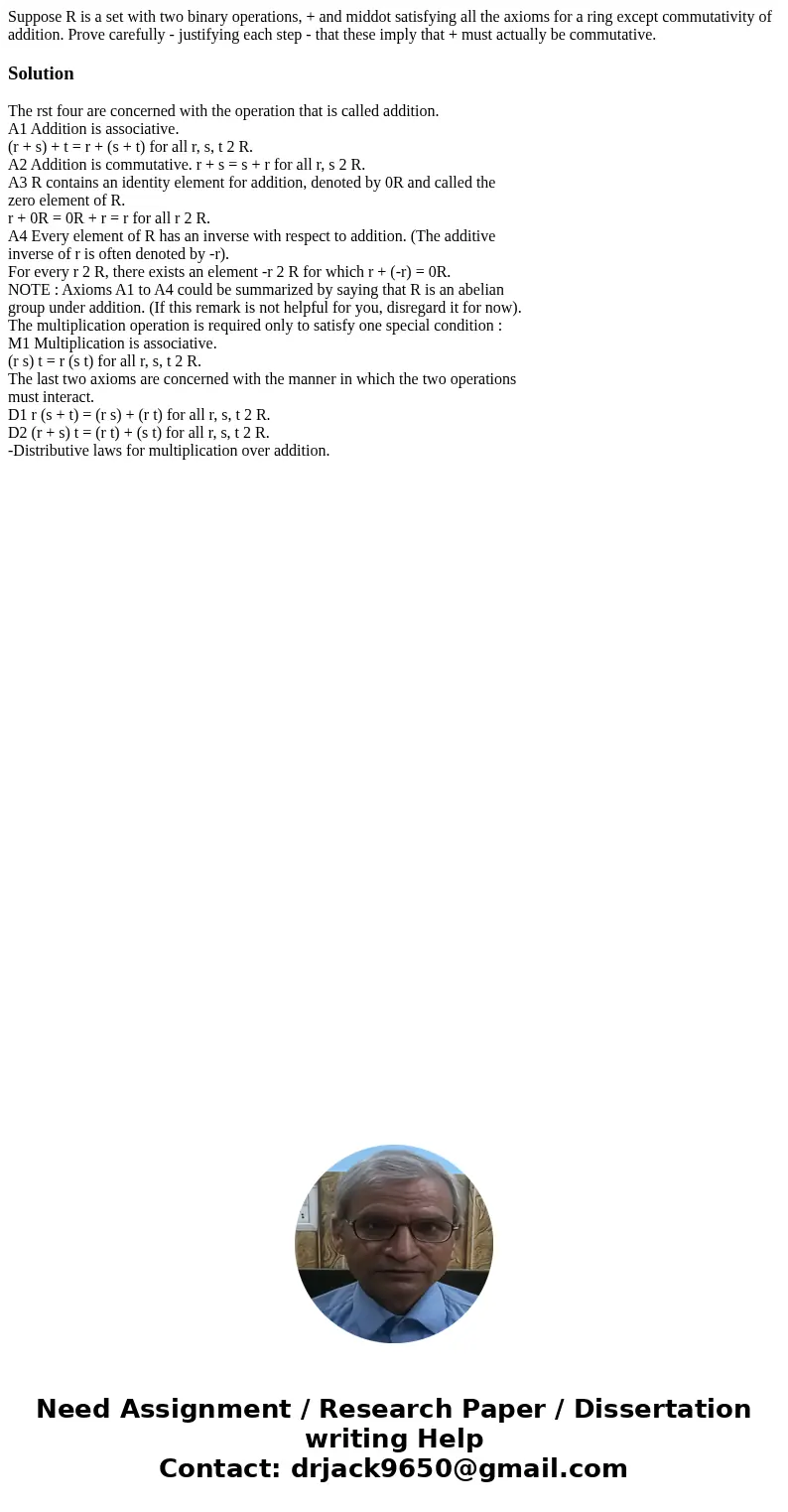Suppose R is a set with two binary operations and middot sa
Solution
The rst four are concerned with the operation that is called addition.
A1 Addition is associative.
(r + s) + t = r + (s + t) for all r, s, t 2 R.
A2 Addition is commutative. r + s = s + r for all r, s 2 R.
A3 R contains an identity element for addition, denoted by 0R and called the
zero element of R.
r + 0R = 0R + r = r for all r 2 R.
A4 Every element of R has an inverse with respect to addition. (The additive
inverse of r is often denoted by -r).
For every r 2 R, there exists an element -r 2 R for which r + (-r) = 0R.
NOTE : Axioms A1 to A4 could be summarized by saying that R is an abelian
group under addition. (If this remark is not helpful for you, disregard it for now).
The multiplication operation is required only to satisfy one special condition :
M1 Multiplication is associative.
(r s) t = r (s t) for all r, s, t 2 R.
The last two axioms are concerned with the manner in which the two operations
must interact.
D1 r (s + t) = (r s) + (r t) for all r, s, t 2 R.
D2 (r + s) t = (r t) + (s t) for all r, s, t 2 R.
-Distributive laws for multiplication over addition.

 Homework Sourse
Homework Sourse